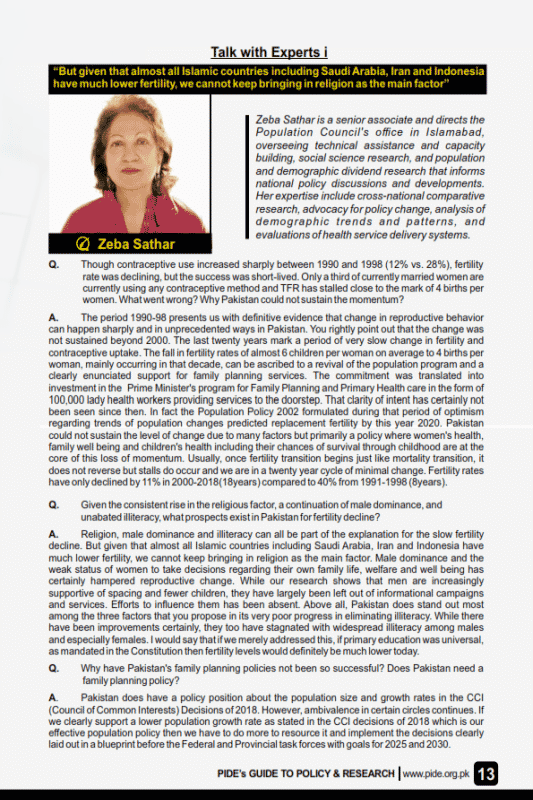Talk with Experts i
Q. Though contraceptive use increased sharply between 1990 and 1998 (12% vs. 28%), fertility rate was declining, but the success was short-lived. Only a third of currently married women are currently using any contraceptive method and TFR has stalled close to the mark of 4 births per women. What went wrong? Why Pakistan could not sustain the momentum?
A. The period 1990-98 presents us with definitive evidence that change in reproductive behavior can happen sharply and in unprecedented ways in Pakistan. You rightly point out that the change was not sustained beyond 2000. The last twenty years mark a period of very slow change in fertility and contraceptive uptake. The fall in fertility rates of almost 6 children per woman on average to 4 births per woman, mainly occurring in that decade, can be ascribed to a revival of the population program and a clearly enunciated support for family planning services. The commitment was translated into investment in the Prime Minister’s program for Family Planning and Primary Health care in the form of 100,000 lady health workers providing services to the doorstep. That clarity of intent has certainly not been seen since then. In fact the Population Policy 2002 formulated during that period of optimism regarding trends of population changes predicted replacement fertility by this year 2020. Pakistan could not sustain the level of change due to many factors but primarily a policy where women’s health, family well being and children’s health including their chances of survival through childhood are at the core of this loss of momentum. Usually, once fertility transition begins just like mortality transition, it does not reverse but stalls do occur and we are in a twenty year cycle of minimal change. Fertility rates have only declined by 11% in 2000-2018(18years) compared to 40% from 1991-1998 (8years).




